Table of Contents
How does 20 g of fat look like?
Ah, fat! The most tasty macronutrient, and that one which is far and wide demonized. That’s not quite true. In contrast to the general opinion, the fat is not your enemy! We had written about it in previous article: Fat which harms you and which one is prosperous for you? Let’s fix its reputation together and learn how to easily add the portion of healthy fat into your eating plan.
Traditional body-building’s diets avoid the fat because fat has many calories. You will obtain 9 calories per gram of fat, which is more than double of the calorie amount which can be obtained from carbohydrates and protein. So it may not be appropriate for body-builders who need to watch their calories. The others, who may not watch their calories receive with such precision, rely on the old-fashioned food pyramids which had always taught us that we should be scared of fat.
Low-fat diets cut the meat and cheese from the eating plan and food industry brings the refreshments with low fat content or without fat at all. Although the low-fat nutrients are losing their power, the word “fat” still brings fear.
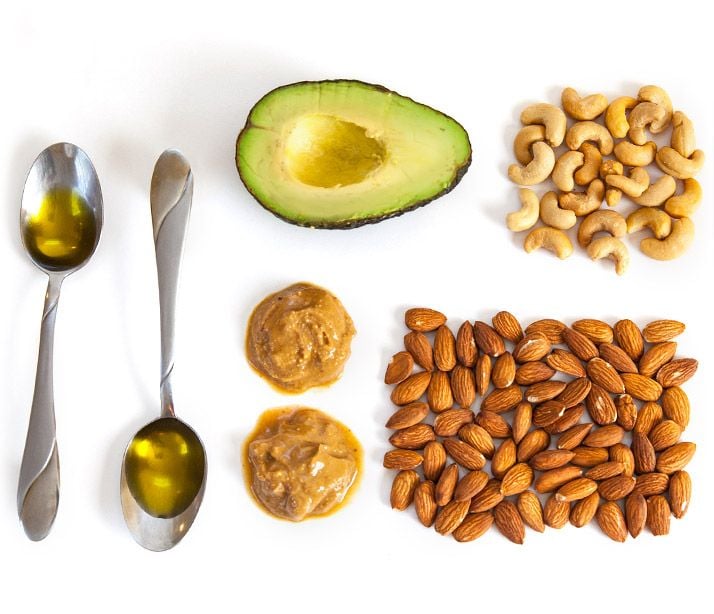
In reality, your body needs fat to work the right way. For instance, the heart cells are running by the means of fatty acids. The fat is necessary for the vitamin and mineral absorption, as much as the cell energy.
However, not all fats have the same nutrition facts for the body. Trans fats occurring in vegetable shortenings and partially hydrogenated oils, have zero health benefits. Despite its bad rep, saturated fats are safe when are consumed in small amounts, usually less than 10% of the daily fat receive. Unsaturated fats can be found in olive oil, food of plant origin and omega-3 fatty acids have potentially healthy impacts on the body, including cholesterol improvement, reduction of joint pain and prevention against heart diseases.
To eat fat is part of balanced and healthy nutrition. But how much of fat you need is dependent upon your body and your goals. Here is some information which can help you to easy measure 20 grams of fat without weighing scale.
You might be interested in these products:
Cashew nuts
Nutrition facts per ¼ of the cup:
• 314 calories
• 17.1 g of carbohydrates
• 25 g of fat
• 10.3 g of protein
If you are tired of eating almonds, cashew nuts are the great alternative! They contain strong calories so don’t overeat with them.
Avocado
Nutrition facts per 3/4 of avocado:
• 241 calories
• 12.9 g of carbohydrates
• 22.1 g of fat
• 3 g of protein
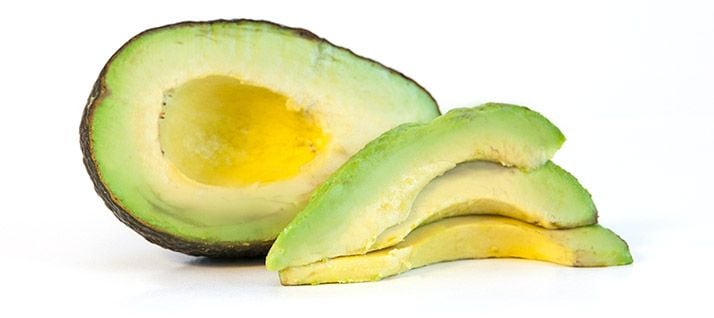
Avocado is the king of healthy fat! It is tasty, full of good nutrients and is suitable to almost everything! You can eat it in raw state with spoon, to slice it and use it for breakfast or to make a great spread out of it. Try to begin your day with avocado and you will see how your body uses the energy during the day.
Peanut butter
Nutrition facts per two teaspoons:
• 180,6 calories
• 3,66 g of carbohydrates
• 14,58 g of fat
• 8,7 g of protein
We simply love peanut butter! It provides amount of possibilities for the consumption. You can consume it with spoon or you can add it to many meals and recipes, to sweet and salty ones. Try to choose peanut butter with 100% peanut content which doesn’t contain any useless additives such as sugar, salt or palm oil.
Almonds
Nutrition facts per ½ of the cup:
• 275 calories
• 9.4 g of carbohydrates
• 24.1 g of fat
• 10.1 g of protein
Almonds are perfect snacks which you can take with you anywhere you go. They are full of healthy fats and provide healthy dose of proteins. They are great because their amount can be easy to calculate and are durable for long time.
Virgin olive oil
Nutrition facts per 1-1/2 of tablespoon:
• 180 calories
• 0 g of carbohydrates
• 21 g of fat
• 0 g of protein
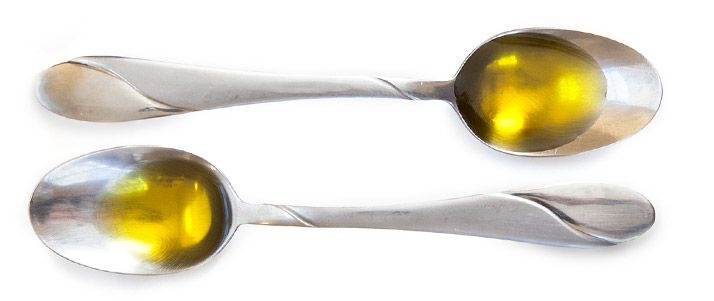
Olive oil is the most simple way to get fat into your eating plan. You can cook almost any meal with it, to add it into salads, or alternatively, to add it into your protein drink or smoothies.
How does 30 g of protein look like?
Do you want to build muscle mass and get rid of excessive fat? Then you need protein! We will show you how much you need and how to find out its amount.
Protein is a molecule which consists of amino acids. It is the basic component of every cell in the body. Your hair and nails are made of protein, and protein is necessary for creation and regeneration of the muscle mass, bones, organs, blood, and even skin. Protein has special meaning for people interested in fitness because it belongs to an important component of muscle mass building process.
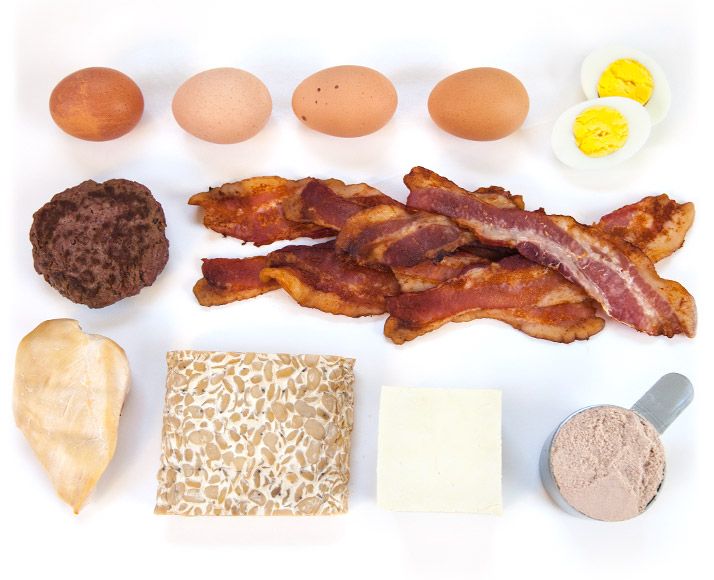
According to researches, the best way to get sufficient amount of protein with a means of food, is to consume 20-30 grams of protein in every meal. 1 We think that is quite solid advice. But how to weigh out 30 g of protein? Not everyone has a perfect estimate and no one wants to read the package labels and nutrition facts of every meal all the time. So this is how 30 grams of protein from basic sources looks like:
Bacon
Nutrition facts per 7 thick slices:
• 428 kcal
• 1.1 g of carbohydrates
• 33 g of fat
• 29.3 g of protein
Even bacon is generally recognized way of obtaining protein, it also contains many calories and many unsaturated healthy fats. In reality, it has almost equal protein and fat proportion. If you want to stay in the same body weight or to lose some weight, to eat 7slices of bacon with egg whites is not the best choice.
Hard-boiled eggs
Nutrition facts per 5 bigger eggs:
• 388 kcal
• 2.8 g of carbohydrates
• 26.5 g of fat
• 31.5 g of protein
Eggs are an excellent protein source. They are extremely great choice if you can’t eat another chicken breast. When you try to limit calories, you can eat only whites but you will need approximately 8 eggs to gain the same protein amount.
95/5 Ground beef
Nutrition facts per 114 g:
• 218 kcal
• 0 g of carbohydrates
• 8.6 g of fat
• 33 g of protein
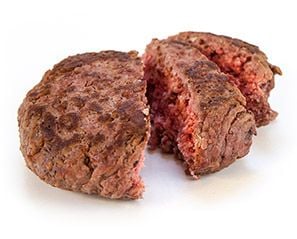
Lean beef may be a great way to your eating plan. Even though it has more fat and by this, more calories than chicken breasts, lean beef provides more protein and even iron.
TEMPEH
Nutrition facts per 170 g:
• 333 kcal
• 15.9 g of carbohydrates
• 19.4 g of fat
• 30.9 g of protein
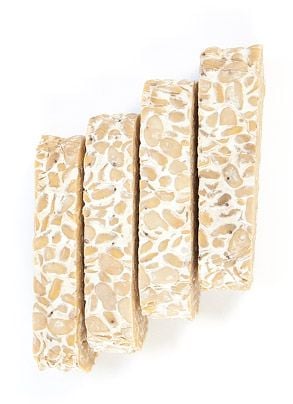
Tempeh is soy product which will supply you with a healthy dose of magnesium, iron and vitamin B6 besides protein. Despite what you may have heard, there are not enough evidence suggesting that soy will increase your estrogen level. 2
Whey protein
Nutrition facts per 1 dose:
• 170 kcal
• 6 g of carbohydrates
• 2.5 g of fat
• 30 g of protein
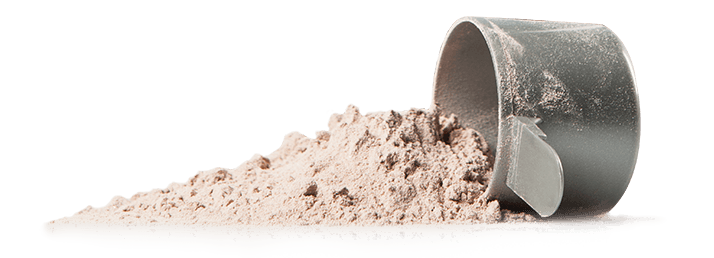
Protein is probably the most effective source of protein. Whether you try to supply the sufficient amount of protein without eating amount of chicken breasts every day, or whether you try to lower the amount not received calories and still to use protein, then 1 dose or 2 doses can be an ideal snack. It is excellent to use protein immediately after training.
Extra-firm TOFU
Nutrition facts per 3/4 of block:
• 278 kcal
• 49,3 g of carbohydrates
• 4,4 g of fat
• 10,2 g of protein
If you don’t belong to meat eaters or you want to have another source of protein, try tofu. Tofu is made of soybeans, it contains alot of healthy fat and protein. It is also a complete protein which means that it contains all the essential amino acids needed for photosynthesis.

Chicken breasts
Nutrition facts per 114 g:
• 164 kcal
• 0 g of carbohydrates
• 5.2 g of fat
• 29.2 g of protein
Chicken breasts are the important element of body-building and for good reason. Chicken breasts contain lot of protein without large carbohydrate and calorie content, at the same time, they have low fat content. They are a good source of potassium and vitamin B6.
How do 50 g of carbohydrates look like?
Lately, the carbohydrates are the greatest fear, they have a bad reputation and are labelled as one of the reasons of obesity. Although carbohydrates are a necessary part of balanced food, they are preferred source of energy of your body and are really important for top performance.
It is important to remember that some carbohydrates are digested faster and easier in the body than the others. Fast digesting carbohydrates, such as refined sugar, are called simple carbohydrates, it means that your body can use these carbohydrates almost immediately. The problem is that consumption of simple carbohydrates can increase your sugar level in blood and they are not maintainable form of energy for the body. Since they are quickly usable, they quickly store as fat.
Complex carbohydrates, such as oat flakes, are digested in the body longer, they don’t increase sugar level in blood so quickly and contain dietary fibre, in contrast to simple carbohydrates.
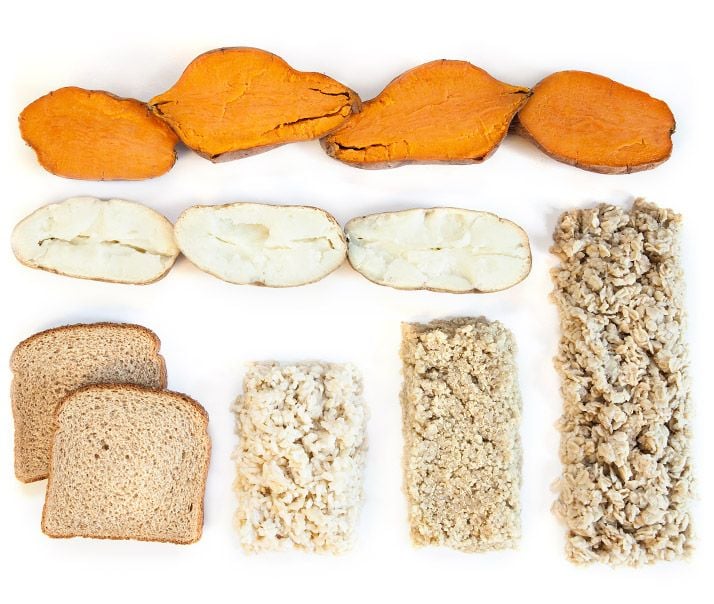
Look at the examples of complex carbohydrates which you can replace simple carbohydrates with, such as doughnuts and sweets, and your energy will persist longer through the day. If you like sweet carbohydrates and you don’t want to remove them from your eating plan, try to consume them immediately after training, of course in moderation.
Sweet potatoes
Nutrition facts per 2 medium large baked potatoes:
• 200 kcal
• 46 g of carbohydrates
• 0,3 g of fat
• 4,5 g of protein
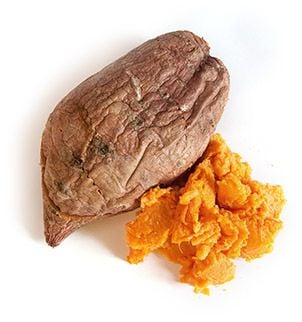
Sweet potatoes provide long-time energy, while they don’t contain much fat. They contain calcium, potassium, thiamin and niacin. They are one of the best vitamin A sources.
Potatoes
Nutrition facts per 1-1/2 medium large baked potato:
• 241 kcal
• 54,9 g of carbohydrates
• 0,3 g of fat
• 6,5 g of protein
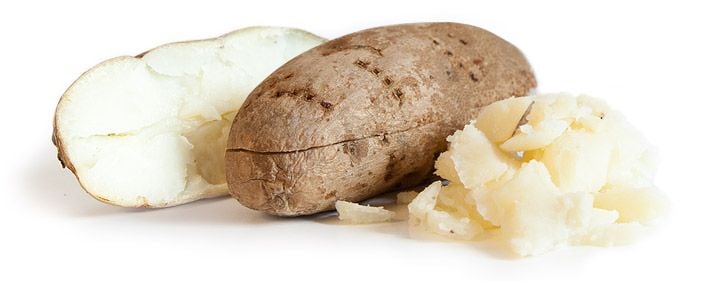
If you don’t like sweet potatoes, consume the normal ones. They have more calories, carbohydrates, protein and fat than sweet potatoes and body digests them faster but these differences are unimportant. Both types are the great carbohydrate sources.
Cooked oatmeal
Nutrition facts per 1-3/4 of the cup:
• 291 kcal
• 49,7 g of carbohydrates
• 6,2 g of fat
• 10,4 g of protein
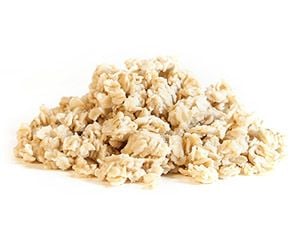
The oat has been the part of human’s nutrition for a long time. The oat flakes have low cholesterol content and offer dose of dietary fiber along with iron, calcium, riboflavin and folic acid.
Wholemeal bread
Nutrition facts per 1 slice:
• 200 kcal
• 44 g of carbohydrates
• 0 g of fat
• 6 g of protein
Bread is a matter of course and common thing, yet people who watch over their budget know that it’s very comfortable and affordable source of carbohydrates. However, you should be careful when buying bread, you should buy “wholemeal” bread and not wheat bread. It is not useless to read its composition too.
Long-grain brown rice
Nutrition facts per 1 cup of cooked rice:
• 216 kcal
• 44,8 g of carbohydrates
• 1,8 g of fat
• 5 g of protein
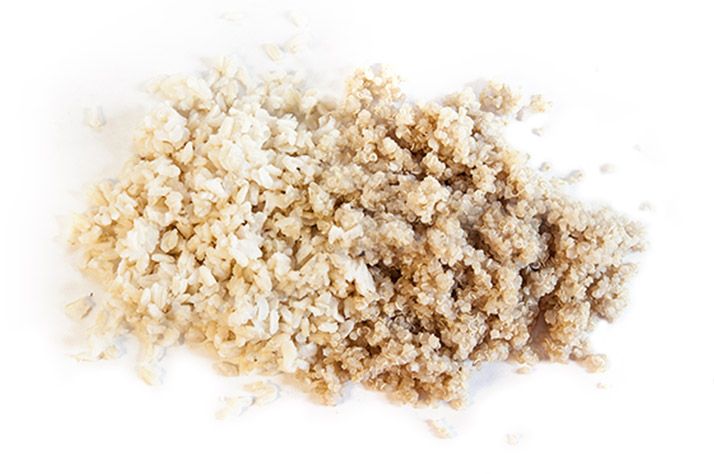
Brown rice has a good reputation in the body-building community because it contains less fat, cholesterol and salt. It contains dietary fibre and needed elements such as selenium and manganese.
Quinoa
Nutrition facts per 1-1/4 of the cup:
• 278 kcal
• 49,3 g of carbohydrates
• 4,4 g of fat
• 10,2 g of protein
Even quinoa is on the list as a source of carbohydrates, it is also complete protein source which will serve as protein source for vegans and vegetarians. Due to the fact it has more protein than other carbohydrate sources, it can contain more calories so watch their receive and weigh out how much you consume.
Which complex carbohydrates, protein and fat do you like consuming the most? Share your opinions on carbohydrates and protein in the comments. In case you like the article, support it by sharing.
[1] bodybuilding – www.bodybuilding.com
[2] Clinical studies show no effects of soy protein or isoflavones on reproductive hormones in men: results of a meta-analysis – https://www.ncbi.nlm.nih.gov/pubmed/19524224

Add a comment